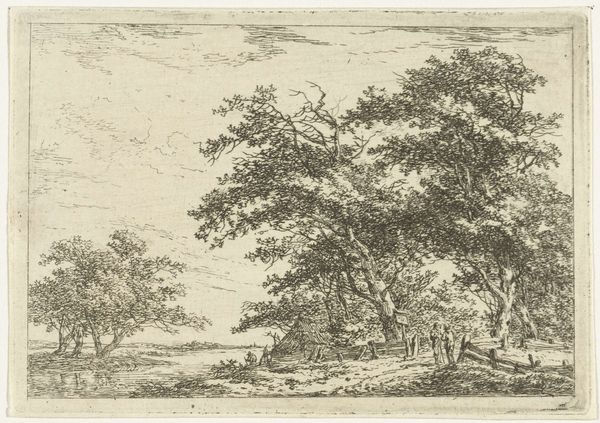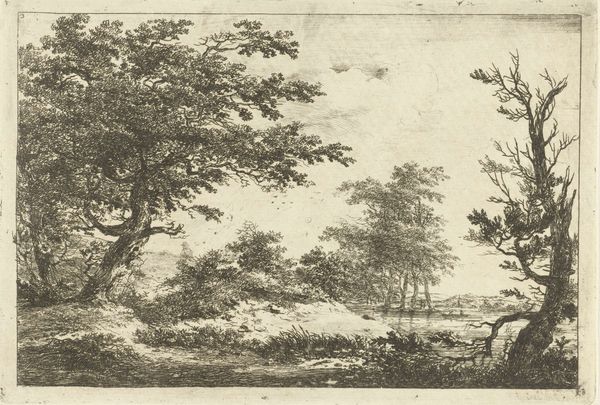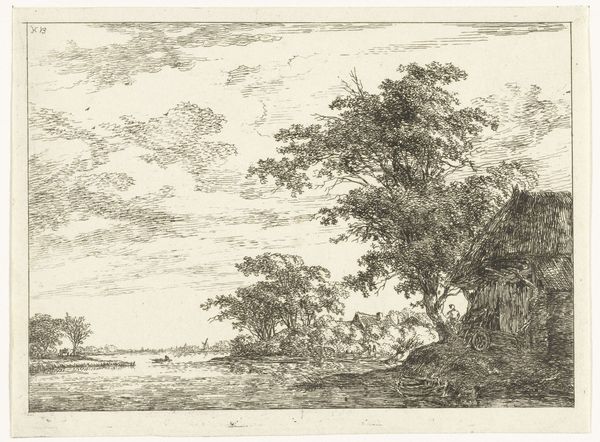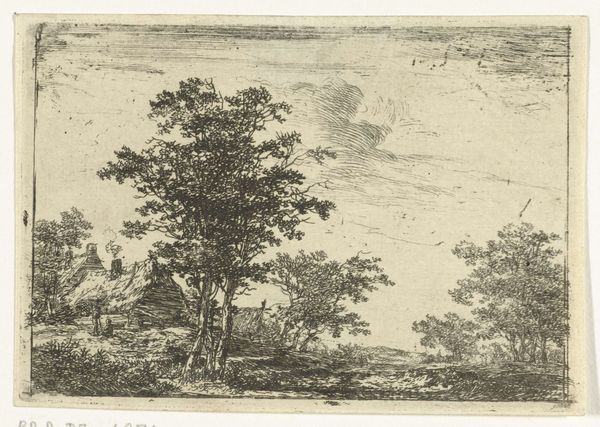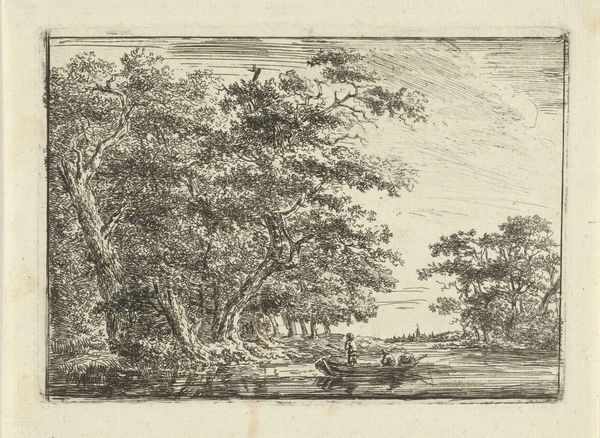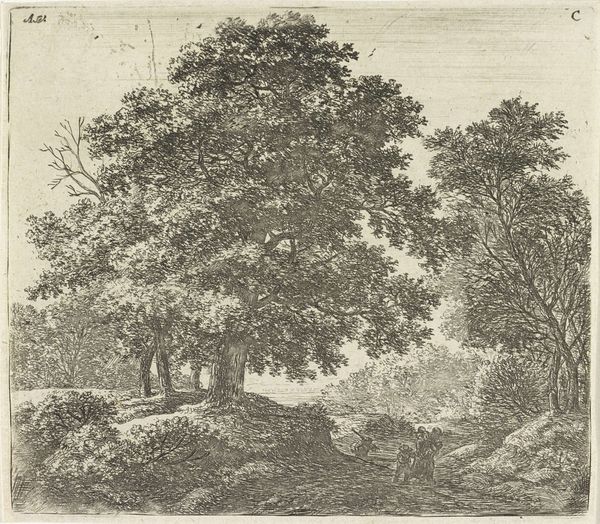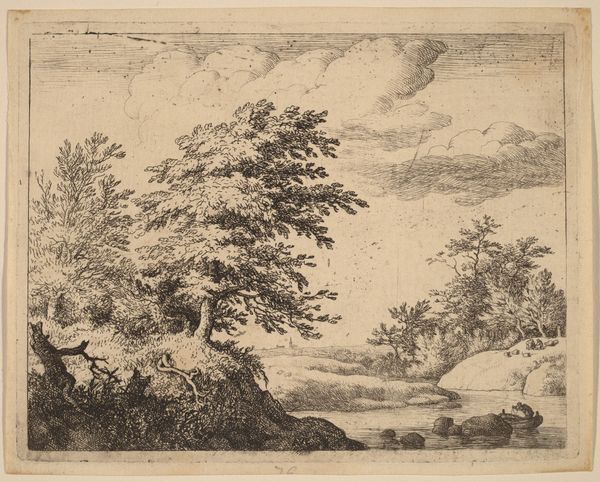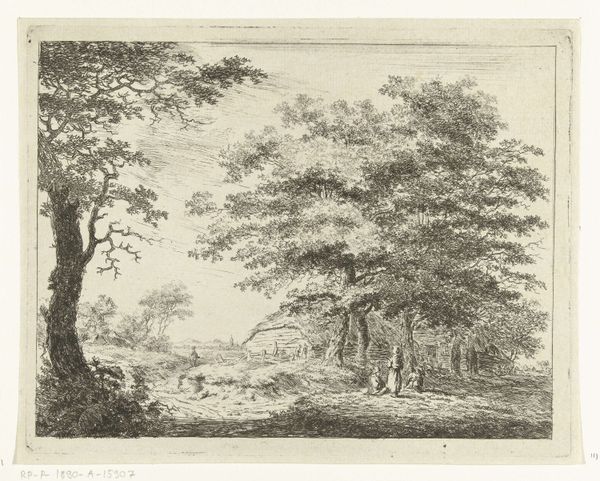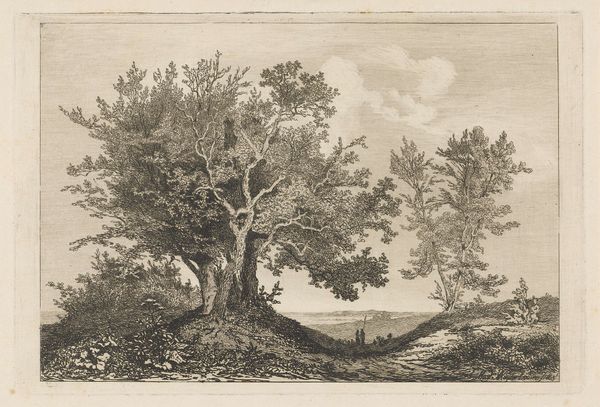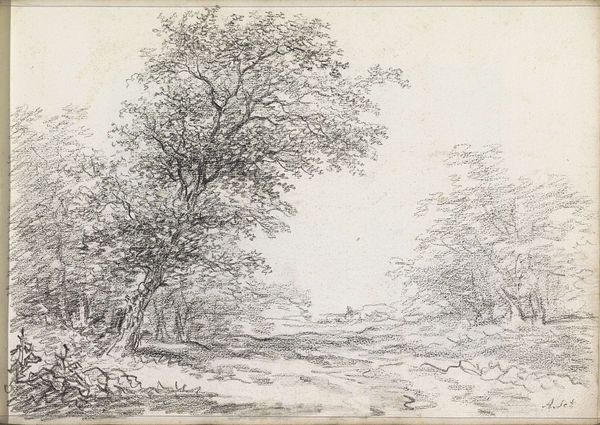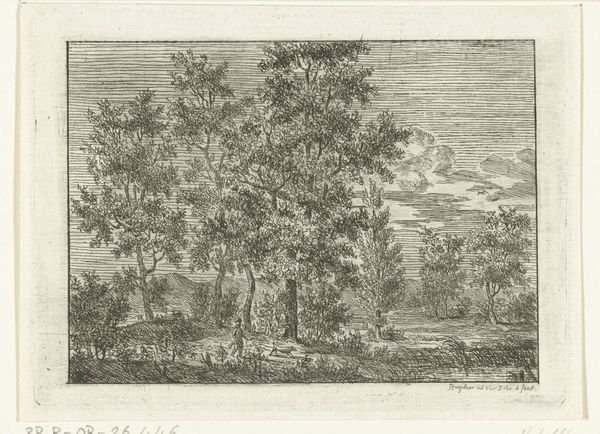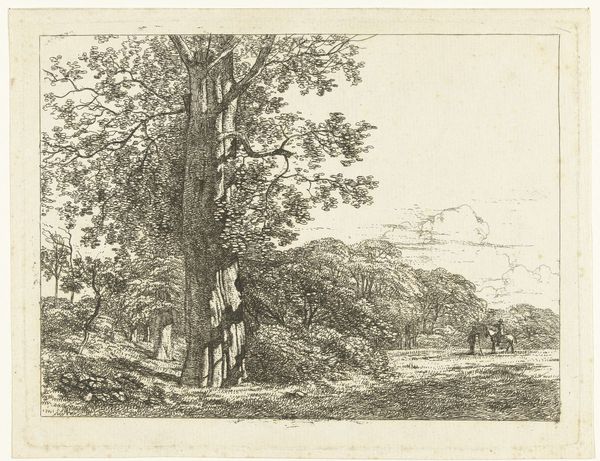
print, etching
# print
#
etching
#
landscape
#
etching
#
romanticism
#
realism
Dimensions: height 113 mm, width 180 mm
Copyright: Rijks Museum: Open Domain
Hermanus van Brussel made this etching, *Zwaar geboomte aan een plas*, using metal plates and acid. The image’s rough, dark textures come directly from the corrosive process used to create it. Etching is a printmaking technique that dates to the early 16th century. To make an etching, the artist coats a metal plate with a waxy, acid-resistant substance known as a ground. Once the ground has dried, the image is scratched into it with a needle. When the plate is dipped into an acid bath, the exposed metal is eaten away, creating incised lines. The plate is then inked and printed, transferring the image to paper. The nature of etching encourages a spontaneous, gestural approach. Van Brussel, however, has taken a more labor-intensive approach, building up deep tonal contrasts and subtle textures. His highly detailed print elevates a traditionally graphic technique, showing how even a humble process can create profound beauty.
Comments
No comments
Be the first to comment and join the conversation on the ultimate creative platform.
